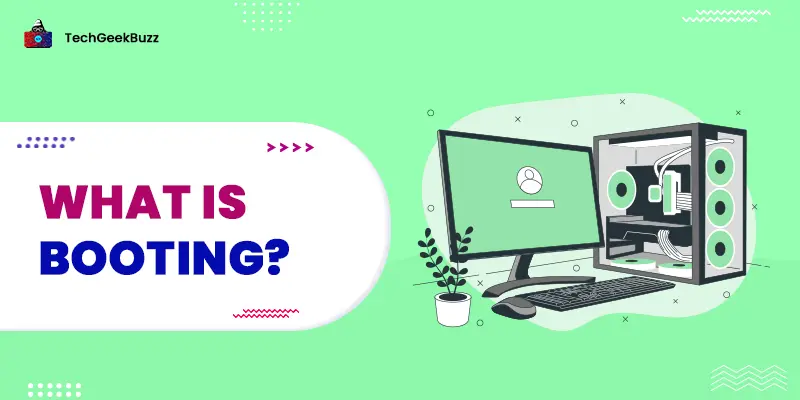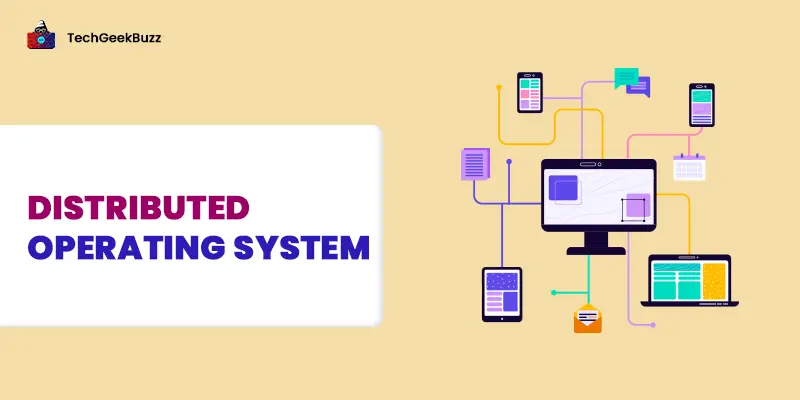In computing, I/O stands for Input/Output. It refers to the communication between a computer and its external devices. So, your computer can communicate with other components and transfer data. Without any I/O devices, you can’t give inputs to your computer or check the outputs.
Here, we will discuss what I/O is, examples of I/O devices, and different I/O control methods. So, let’s get started!
What is I/O?
The input and output (I/O) process exchanges data between a computer and external devices. When you provide any data to your computer through external sources, it is called “input.”
In contrast, when a computer displays the results via any external device, it is the “output” process.
This way, you can interact with your system. Besides, the I/O process makes your computer functional to perform tasks and deliver asked results.
Examples of I/O
I/O devices can be categorized into two main types: Input and Output. Here are examples of I/O devices accordingly:
1. Input Devices
Input devices are electronic devices used to feed data to a computer for processing tasks.
Here is a list of common input devices :
- Keyboard: You can use the keyboard to input text, commands, and keystrokes into the computer.
- Mouse: Mouse helps you to point and select objects on the computer screen.
- Webcam: If you want to capture video and images on your computer, you can use a webcam.
- Microphone: An external or built-in microphone on your computer system captures your audio.
- Scanner: Using a scanner, you can convert physical documents, images, or photos into digital formats.
- Touchscreen: Similar to your mobile phone, the touchscreen peripheral allows you to interact with the computer using your hands.
- Digital Stylus: If you have a touchscreen in the computer system, the digital stylus lets you write, draw, or give input.
- Joystick: For gamers, joysticks are essential. It helps you to control character movements or actions in video games.
- Barcode Reader: Barcode Reader is used in retail business to scan barcodes to input data.
- Biometric Devices: Biometric devices like fingerprint scanners, iris scanners, and facial recognition systems are used for secure authentication.
2. Output Devices
Output devices are electronic devices that display the output generated by a computer's CPU based on the provided input.
Here is a list of common output devices :
- Monitor/Display: The monitor shows you the output in the form of text, graphics, videos, etc.
- Printer: The printer lets you generate hard copies of documents, images, or graphics.
- Speakers/Headphones: If the output is in audio, you may use speakers or headphones to listen to it.
- Projector: Projects help you to present the output on a large screen or surface.
- Haptic Feedback Devices: These output devices are used in VR apps and games. They provide tactile sensations, simulating touch or vibrations.
Types of I/O
Now that you understand the importance of the I/O process in computing systems let’s know the different types of I/O processes.
So, you can optimize your data transfer, improve system performance, and select the most suitable communication methods for various devices.
1. Hard I/O
The physical I/O devices like a keyboard, mouse, monitor, printer, etc., are referred to as hardware components. So, when the system transfers data transfer between the internal components (like the CPU , memory, and storage) and these external hardware components, it is known as hard I/O.
Examples of Hard I/O:
- Typing on a keyboard sends input data from the keystrokes into the computer's memory.
- The movement information is sent to the computer when you move the mouse. Then, the cursor on the screen responds accordingly.
- When you send a print command to a printer and receive a printed document.
2. Soft I/O
When you use any software or networks like the Internet, your computer performs soft I/O. In this case, your system transfers data through software and network protocols rather than external hardware devices.
Examples of Soft I/O:
- Your data is sent over a network via email.
- When you access remote resources.
- Streaming media content such as videos or audio from the internet.
- When you upload or download files from servers.
I/O Control Methods
I/O control methods handle the data transfer process between your computer CPU and external devices. It optimizes the transfer and ensures coordination between the devices. Here, we will share the main I/O control methods in detail.
1. Programmed I/O
Programmed I/O is the most basic method of controlling the I/O process. In this method, the CPU issues read or write commands to the device and initiates the I/O process. So, it primarily manages the data transfer between external devices and memory.
Here's how Programmed I/O works:
- The CPU continuously checks the I/O device's status. So it can send or receive data with no interruption.
- When the I/O device is ready, the CPU transfers the data using specific instructions or I/O ports.
If you have old devices or do not require frequent data transfers, programmed I/O is ideal. You must not choose it for high-speed devices or to transfer large amounts of data. In this case, the CPU will be occupied during the entire I/O operation.
2. Interrupt-Driven I/O
Interrupt-driven I/O is an improved version of programmed I/O. In this method, the CPU issues an I/O command and executes other tasks rather than keeping tabs on devices. So, your system efficiency is increased.
Here's how Interrupt-Driven I/O works:
- The CPU initiates the I/O operation and starts executing other instructions or tasks.
- When the I/O device is ready for data transfer, it sends an interrupt signal to the CPU.
- Then, the CPU suspends its current task, saves its state, and switches to the I/O routine.
- After the data transfer, the CPU resumes the previous task from where it left off.
In Interrupt-Driven I/O, the CPU does not wait for the device and continues performing other tasks. Therefore, you must use this method if you have I/O devices with varying response times and need high-speed data transfer.
3. Direct Memory Access (DMA)
Direct Memory Access (DMA) is a specialized I/O control method. It allows specific devices to access the computer's memory directly without involving the CPU. So, if you use disk controllers or graphics cards, it is ideal. Besides, DMA enhances data transfer speed and reduces CPU lag during large data transfers.
Here's how DMA works:
- The CPU sets up the DMA controller with the necessary information. It includes the memory addresses and the transfer direction (read or write).
- The DMA controller takes over the I/O process and transfers data directly between the device and memory.
- Once the data transfer is complete, the DMA controller informs the CPU about the operation's status.
4. Advanced Programmable Interrupt Controller (APIC)
APIC is an advanced version of the Interrupt-Driven I/O method used in multi-core processor systems. It has more flexible interrupt-handling capabilities and delivery modes like prioritization and redirection. So your system performs and responds better.
Here’s how APIC works:
- Each processor of your system has Local APIC, and external devices have IOAPIC.
- When a device wants to transfer data, it sends an interrupt request to the APIC.
- The IOAPIC routes this request to a specific CPU core.
- Then, APIC invokes the interrupt service routine to handle the data transfer.
- At last, the CPU sends an End of Interrupt signal to the APIC to conclude the process.
APIC allows the CPU to handle multiple interrupts from various devices more efficiently. So, if you are working in a large network, use this I/O method.
Conclusion
I/O is fundamental for computers to interact with external devices and users. It facilitates data exchange and communication so you can easily give inputs and see the results. Therefore, understanding I/O operations and control methods helps you optimize computer performance and design efficient computer systems.
People are also reading:
![What is I/O? [Types, Examples, & Methods]](/media/new_post_images/What_is_I_O.webp)

![What is an Assembler? [Definition, Working, & Types]](/media/new_post_images/What_is_Assembler.jpg)

